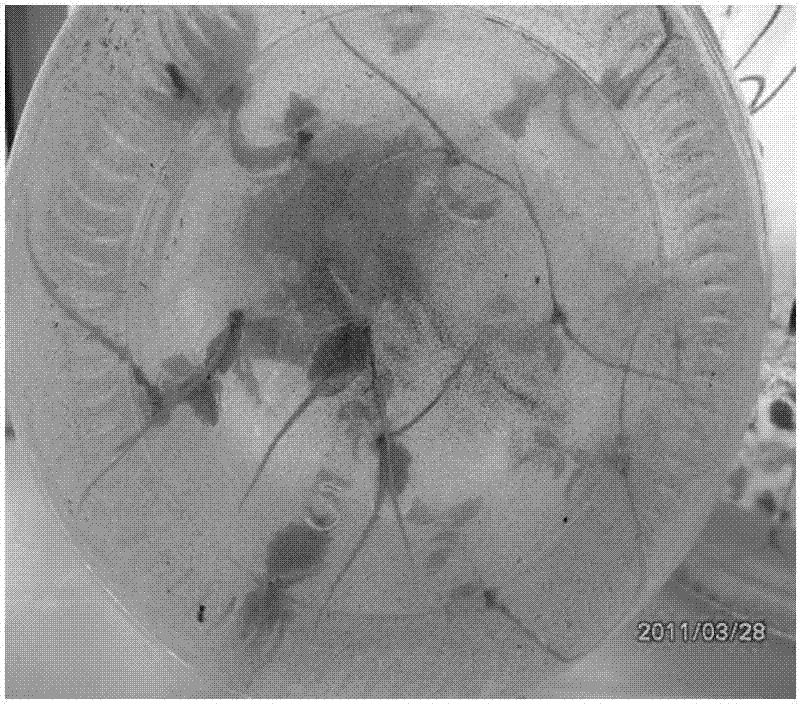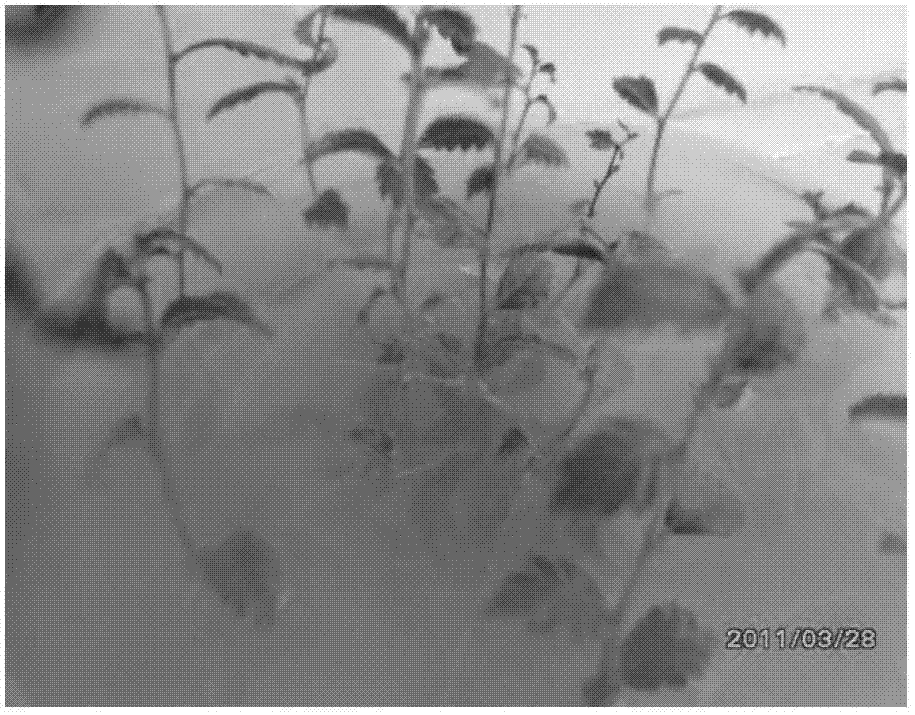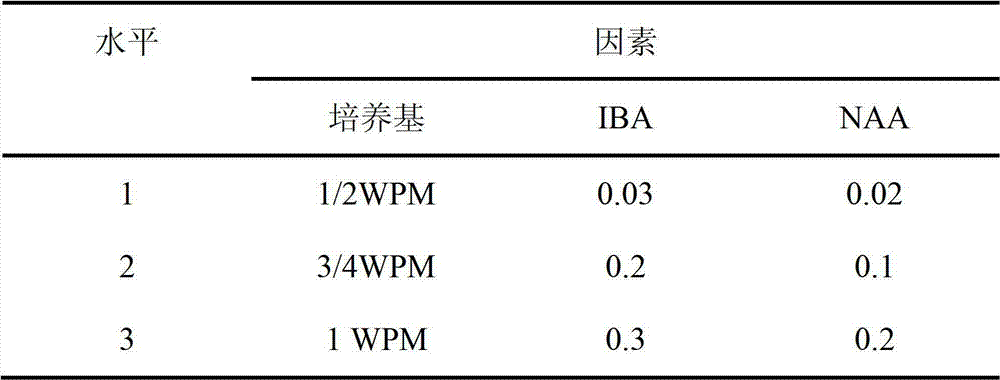In-bottle rooting method for salt tolerance ulmus pumila tissue culture seedling
A technology for tissue culture seedlings and salt tolerance is applied in the field of in-bottle rooting of salt-tolerant white elm tissue culture seedlings. , the effect of improving the rooting rate
- Summary
- Abstract
- Description
- Claims
- Application Information
AI Technical Summary
Problems solved by technology
Method used
Image
Examples
Embodiment 1
[0038] Select the salt-tolerant Ulmus elm tissue culture seedlings that are subcultured, and the selection standard is a single elm seedling with a height of 2-3.5cm, strong, and stretched leaves;
[0039] Inoculate the selected subcultured salt-tolerant Ulmus alba tissue culture seedlings on the WPM rooting medium;
[0040] Wherein, the WPM rooting medium is a 1 / 2 WPM rooting medium that is reduced by 1 / 2 with the macroelements in the WPM basic medium.
[0041] The growth hormone is indolebutyric acid (IBA), and its final concentration is 0.05mg / L; the cytokinin is naphthaleneacetic acid (NAA), and its final concentration is 0.05mg / L; the exogenous added The substances are activated carbon (AC) and white sugar, the final concentration of the activated carbon (AC) is 0.2g / L, and the final concentration of the white sugar is 20g / L.
[0042] The pH value of the WPM rooting medium is 5.8.
[0043] After 25 days of inoculation, count the rooting rate, rooting rate=number of root...
Embodiment 2
[0045] Select the salt-tolerant Ulmus elm tissue culture seedlings that are subcultured, and the selection standard is a single elm seedling with a height of 2-3.5cm, strong, and stretched leaves;
[0046] Inoculate the selected subcultured salt-tolerant Ulmus alba tissue culture seedlings on the WPM rooting medium;
[0047] Wherein, the WPM rooting medium is a 1 / 2 WPM rooting medium that is reduced by 1 / 2 with the macroelements in the WPM basic medium.
[0048] The growth hormone is indolebutyric acid (IBA), and its final concentration is 0.2mg / L; the cytokinin is naphthaleneacetic acid (NAA), and its final concentration is 0.1mg / L; the exogenous added The substances are activated carbon (AC) and white sugar, the final concentration of the activated carbon (AC) is 0.5g / L, and the final concentration of the white sugar is 30g / L.
[0049] The pH value of the WPM rooting medium is 5.85.
[0050] After 25 days of inoculation, count the rooting rate, rooting rate=number of roote...
Embodiment 3
[0052] Select the salt-tolerant Ulmus elm tissue culture seedlings that are subcultured, and the selection standard is a single elm seedling with a height of 2-3.5cm, strong, and stretched leaves;
[0053] Inoculate the selected subcultured salt-tolerant Ulmus alba tissue culture seedlings on the WPM rooting medium;
[0054] Wherein, the WPM rooting medium is a 1 / 2 WPM rooting medium that is reduced by 1 / 2 of the macroelements in the WPM basic medium.
[0055] The growth hormone is indolebutyric acid (IBA), and its final concentration is 0.3mg / L; the cytokinin is naphthaleneacetic acid (NAA), and its final concentration is 0.2mg / L; the exogenous added The substances are activated carbon (AC) and white sugar, the final concentration of the activated carbon (AC) is 2g / L, and the final concentration of the white sugar is 40g / L.
[0056] The pH value of the WPM rooting medium is 5.9.
[0057] After 25 days of inoculation, count the rooting rate, rooting rate=number of rooted pla...
PUM
 Login to View More
Login to View More Abstract
Description
Claims
Application Information
 Login to View More
Login to View More - R&D
- Intellectual Property
- Life Sciences
- Materials
- Tech Scout
- Unparalleled Data Quality
- Higher Quality Content
- 60% Fewer Hallucinations
Browse by: Latest US Patents, China's latest patents, Technical Efficacy Thesaurus, Application Domain, Technology Topic, Popular Technical Reports.
© 2025 PatSnap. All rights reserved.Legal|Privacy policy|Modern Slavery Act Transparency Statement|Sitemap|About US| Contact US: help@patsnap.com



